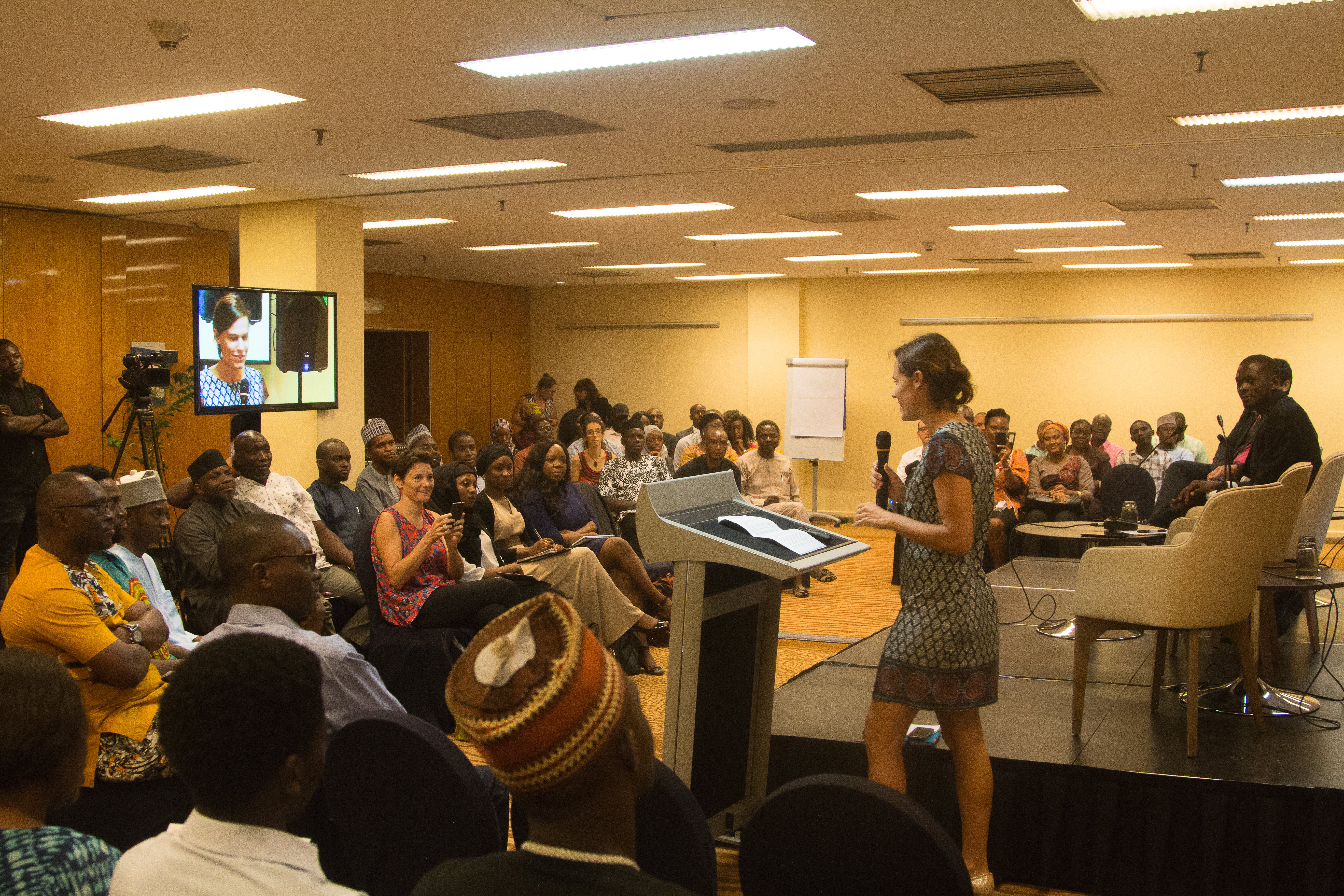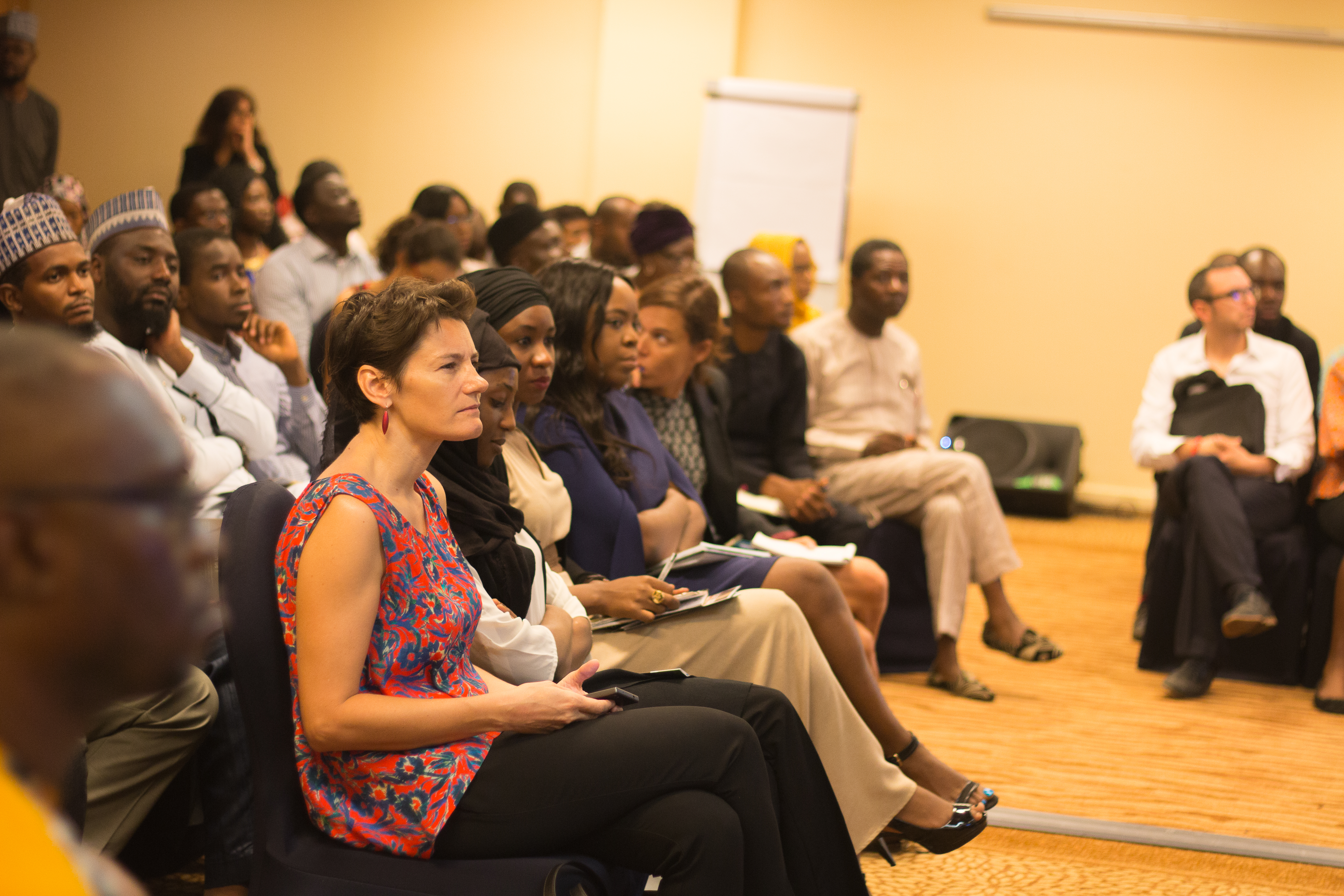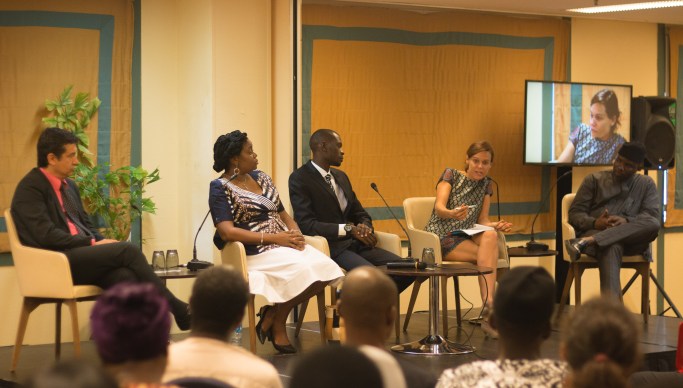The built environment is responsible for the largest consumption of energy produced in the world. They have a corresponding largest global greenhouse gas emission by sector, 40% according to the United Nations Environment Programme (UNEP). How does this all affect us and the environment? Negative impacts of climate change have positioned many people in danger. It has destroyed lives and properties. Worse, it places a dark cloud for future generations. As such, there is need to reduce the impact of our built environment on the carbon footprint.
The French Institute of Nigeria and Green Habitat Initiative, on 31st of May in Abuja, brought together professionals in the built environment industry to debate the right sustainability principles and materials for Nigeria’s built environment. Four panelists drawn from different disciplines and professions that cut across sustainability in architecture were brought together to lead the discussion. After introductory speeches by the panelists, a panel discussion held between the panelists, moderated by the Director of Green Habitat Initiative Sadiq Gulma.
A summary of the viewpoints of the four panelists is highlighted below.
Nmadili Okwumabua is Nigerian and promotes modernizing African architecture in Nigeria’s cities, through her organization Community Planning and Design Initiative. Through her presentation and contributions to the discussion, she stressed the need to reclaim our heritage by not being embarrassed about using red earth for our buildings in Abuja. Through her organization, Nmadili receives entries of architectural plans modernized with African values from everyone around the globe. She has received many great entries reflecting numerous African culture and values in their design. The panelist revealed she is currently building a prototype of such sustainable houses. The model would be instrumental in advancing the movement.
Having expressed her pessimism at the beginning of her presentation, Armelle Choplin our second panelist has been following cement, what she calls ‘the grey gold’ from Nigeria through Benin, Togo to Ghana. She is concerned that Nigeria may not stop using cement in building because it is becoming cheaper and Dangote Industries is providing all the cement Nigeria needs. Through her research, she has discovered there is a social symbol and even political to the use of cement in our buildings. People who use other materials, such as red earth maybe seen as less privileged. There is a challenge of finding skilled local builders to teach foremen how to use red mud in constructing strong buildings that can go as high as 10 story building. For a paradigm shift to take place, she asserts that notable and prominent people and organizations like Dangote would play an influential role if they take the lead.

Having understood the local issues with the building materials in question, Mr. Stephanne Pouffary was on the panel to provide the macro vision of sustainability in cities. Through his NGO, ENERGIES 2050 he has worked with up to 30 cities all over the world including those in West Africa to help them advance their energy efficiency and sustainability goals. His contribution clarified that different cities have different priorities and motivation to go green. Our ability to personalize the codes that will drive everyone to cleaner cities. For that to work, he highlighted 3 things that needs to be done; increase professionals’ capacity in sustainability, form regional coalitions to promote goals and work out the cost benefit analysis for sustainability to go mainstream. At the end, cost drives everything.
All the talk would be in vain if there are no institutionalized policies to control and regulate the built environment. The fourth panelist, Dr. Sherif Y. Razak who is from the Department of Development Control (authority in charge of approving all building plans and development in Abuja) was on the panel to describe what the government is doing and needs to do. Currently, the Department has instituted a green building committee to vet all building submissions against certain green building concepts. However, a lot needs to be done before a bigger impact can be made. He stressed the need to increase capacity amongst professionals, including government staff. A prototype of buildings with such sustainability standards would be pivotal in influencing building policy and regulations. Therefore, what Ms Nmadili is building should serve as a good reference point for policy makers to use in changing the regulations.
After debating amongst each other, the panelists engaged with the teeming audience. Many shared their views and supported the fact that capacity needs to increase, especially amongst architects who are the chief drivers of the built environment. Many others questioned the officer from the Department of Development Control and their need to enforce the principles.

The event concluded with more discussions amongst participants during the cocktail.
Written by Sadiq.
 Sadiq Abubakar Gulma steers the organizational mission of Green Habitat. He is a member of the Green Talents International Forum for High Potentials in Sustainable Development, a LEED accredited green building professional and has a master’s degree in Environmental Engineering. His research interest and work lie in investigating and improving the thermal conditions of urban built environments. Follow him on Twitter @SadiqGulma
Sadiq Abubakar Gulma steers the organizational mission of Green Habitat. He is a member of the Green Talents International Forum for High Potentials in Sustainable Development, a LEED accredited green building professional and has a master’s degree in Environmental Engineering. His research interest and work lie in investigating and improving the thermal conditions of urban built environments. Follow him on Twitter @SadiqGulma


